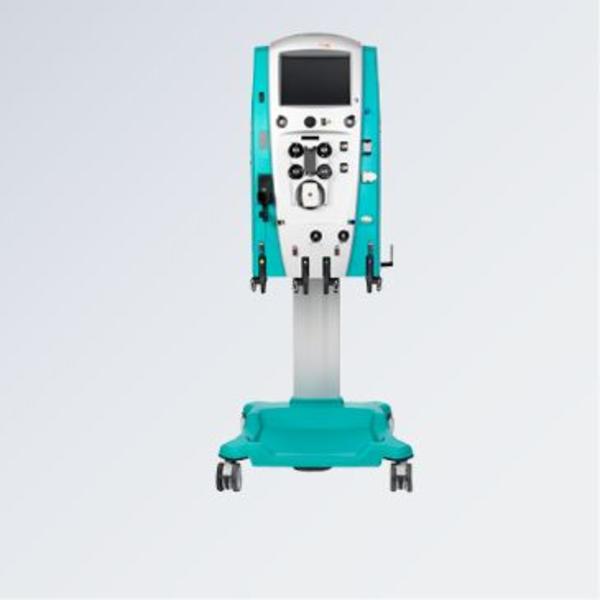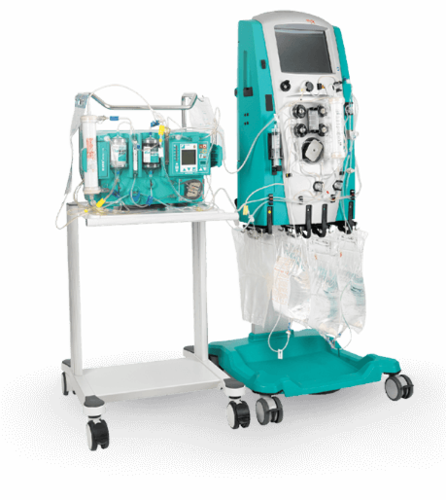
Liver support for your critically ill patients
The MARS system is used in the treatment of liver failure to enable native liver regeneration or as a bridge to liver transplantation.1* It removes protein-bound and water-soluble toxins from the blood such as ammonia, urea, and aromatic amino acids.2 It thus reduces the amounts of toxins that reach the brain and are responsible for the development of hepatic encephalopathy (HE).1
*This intended use is not cleared for the U.S.
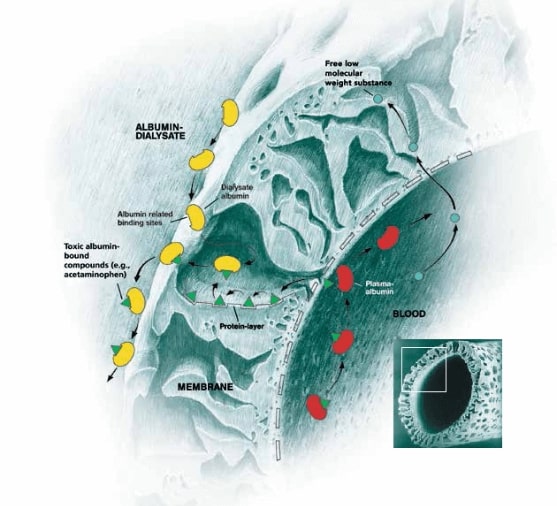
A membrane designed for your patients’ needs
The MARS FLUX semi-permeable membrane is designed to remove both water-soluble and protein-bound drugs and poisons. The membrane’s pore-size and properties allow size-selective clearance while retaining other important blood components such as clotting factors, blood cells, hormones, and essential proteins.
When the liver fails: liver support through extracorporeal toxin removal
With the MARS system, the blood in the extracorporeal circuit is pumped through the specialized MARS FLUX filter. Protein-bound and water soluble substances pass through the membrane by diffusion and convection into the albumin-enriched dialysate. The albumin dialysate is then regenerated. It passes through the diaFLUX filter in the Prismaflex system to remove water-soluble substances, and continues through the MARS adsorbers which remove the albumin-bound lipophilic substances, such as drugs and poisons. The MARS Treatment Kit comes with the MARS FLUX, diaFLUX, adsorber cartridges and tubing packaged together.
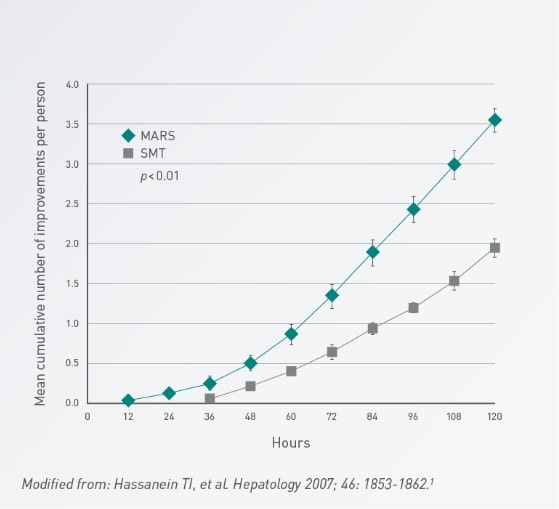
Fast and significant clinical HE improvement in HE with the MARS system1
A randomized, controlled study (n = 70) has shown:
• Patients under MARS therapy achieved HE improvement faster and more frequently than patients under standard medical care (SMT)(p = 0.045)
• More patients with severe HE improved by 2 grades (HESA) under MARS therapy in comparison to SMT (34% vs. 18.9%, p = 0.044) during the 5 day study period
• Surviving patients who improved their HE by 2 grades did not deteriorate back to their pre-study grade
• Patients under MARS therapy improved already by a median of 5.25 hours after randomization compared with SMT only. The median time to the first 2 grade improvement in HE was 72 hours in patients under MARS therapy versus 108 hours in the SMT group
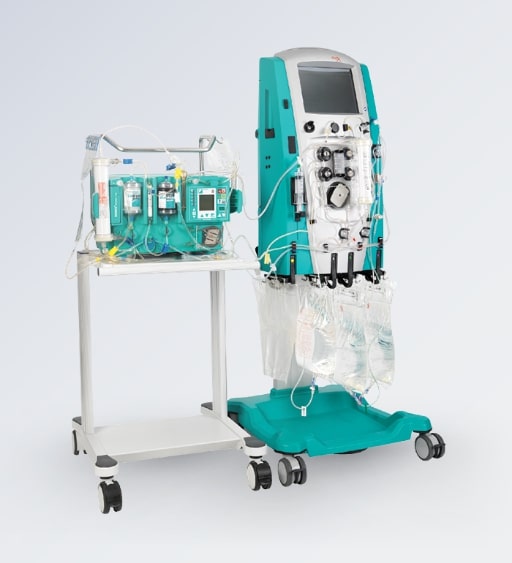
Powered by the Prismaflex system
The MARS system can be added to your patient’s other organ support therapies, as it utilizes CRRT and dialysis equipment. When combined with the Prismaflex system, the MARS circuit expands the ability of the CRRT treatment to simultaneously remove not only water-soluble substances, but also albumin-bound (lipophilic) substances.
Related Products
IMPORTANT SAFETY INFORMATION
The MARS method is used to remove protein-bound and/or water-soluble toxins from the blood, primarily in patients with acute or chronic liver failure frequently accompanied by endogenous intoxication, jaundice (icterus) or comatose conditions.
The Prismaflex control unit is intended for:
- Continuous Renal Replacement Therapy for patients with acute renal failure and/or fluid overload.
- Therapeutic Plasma Exchange Therapy for patients with diseases where removal of plasma components is indicated.
- Hemoperfusion for patients with conditions where immediate removal of substances by adsorption is indicated.
- Hemopurification for patients with conditions where extracorporeal elimination of carbon dioxide is indicated.
For safe and proper use of the products mentioned herein, please refer to the Operator’s Manual or Instructions for Use.



